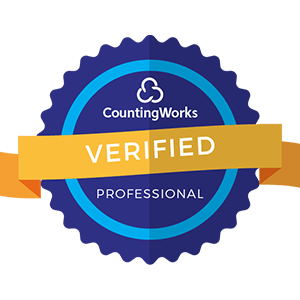
Modern employees prioritize managing their work-life balance and having more control over their careers. It is no surprise, then, that employee self-service systems have become more common. These systems allow workers to manage their employment information themselves, instead of solely depending on the human resources department.
Employee self-service, also known as ESS, is typically mobile technology that puts many traditional HR functions at your employee’s fingertips. This can be an intranet or employee portal where workers can log in and manage their benefits, personal information, expenses, and other details relevant to their positions, but more commonly, it’s functionality that’s integrated into an organization’s Human Resources Information System (HRIS).
The digital revolution has made tools like this possible. Employee self-service brings many benefits to companies, including giving employees greater control, creating new information security and storage opportunities, and streamlining once-tedious processes. This guide covers everything you need to know about employee self-service functionality, including features and benefits, the best ways to ensure deploy technology, and common challenges you may encounter.
ESS functionality varies based on company size, HR department responsibilities, and integration requirements with other company systems. Here are a few of the most common ESS features:
Most ESS systems allow workers to upload, edit, and maintain personal information. This includes name, address, email address, phone number, emergency contact, and the like. Whenever a change occurs, they can log in on their computer or smartphone and make the updates.
Employees frequently need quick access to their pay stubs, W-2s, and to double-check tax withholding. ESS is a great way to allow visibility into each paycheck and quick access to tax documents.
These systems can easily integrate with expense management, including travel expense reimbursement and tracking.
It helps employees and the HR department to have a central location for benefits management. Employees can log in via ESS during open enrollment to make their benefit elections or update dependent information if they go through a major life event, such as getting married or the birth of a child.
Some human capital management (HCM) platforms integrate ESS functionality into their time and attendance modules, allowing workers clock-in and clock-out, view leave balances and request time off from their managers. Managers can accept or deny leave requests and approve timecards from their mobile devices using manager self-service (MSS).
One of the most significant benefits of ESS is that it allows employees quick and convenient access to their personal data and important records. This relieves employee and HR-anxiety and frees HR to focus on more strategic initiatives.
.jpg?width=1000&name=Untitled%20design%20(5).jpg)
The benefits of employee self-service are clear, and they have proven to be popular for a workforce that is increasingly digitally-oriented. Yet many companies may be unaware of the best ways to deploy this new functionality into existing workflows. These are a few ways to help employees master the new functionality and adopt them successfully:
Small, mid-sized, and large businesses all benefit from ESS. Make sure you and your teams thoroughly weigh the pros and cons of allowing partial or full access to employees. Ensure that the timeline for adoption is realistic given the aptitude of your user-community.
ESS is relatively intuitive, but it is still crucial to provide adequate training opportunities to workers as you roll out these changes. Hold in-person training or webinars and provide additional resources in case they encounter obstacles when using the new system. Have a team or team member dedicated to ESS support. This is particularly critical if you are looking to deploy ESS at open enrollment.
The HR department may take control of employee self-service introduction, but it should still be a companywide effort. Involve managers and run a few pilots with a cross-section of your employee-base which will bring significant insight and perspective into achieving broad success.
Another way to successfully introduce ESS is to make sure employees understand the new system’s benefits. Let them know that their convenience and visibility are priorities and that ESS will provide both. Be patient as they learn how to use the tools and reassure them that processes will be much easier once everyone gets the hang of it. Raffling a few inexpensive TVs or gift-cards to employees who update their dependent or address information is a cost-effective method of capturing the attention of technology-adoption laggards.
Business leaders and HR must be in alignment with ESS adoption so employees will follow suit. Assess which ESS features your company would most benefit from using, as you may not want to migrate every single employment management function to employee self-service at the exact same time.
There are still a few roadblocks to keep in mind that may emerge during ESS training and companywide adoption, even with all the benefits. Beware of these common challenges you and your teams may encounter:
Emphasizing the benefits of ESS compared with manual or paper-based systems will help employees understand how much better these new processes are. It may take time and practice, but they will eventually master it, leading to streamlined workflows and improved employee satisfaction.
Deploying new ESS technology can be time-consuming, expensive, and frustrating for employees before they realize the value. Consult with an HCM specialist at Ignite HCM when you need assistance rolling out employee self-service or other HCM technology.
Our experts deliver on-demand ADP consulting services and ADP integration and provide general support services for your payroll systems. Contact Ignite HCM for help with your payroll management and HR optimization needs.


